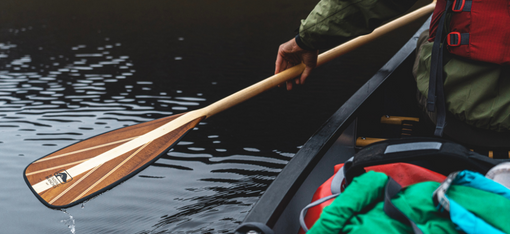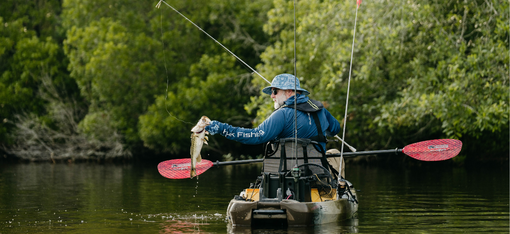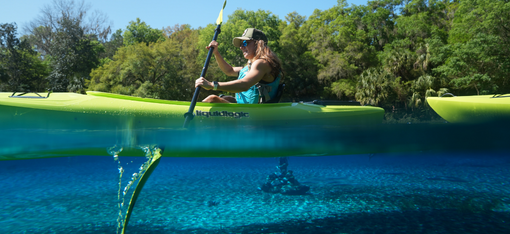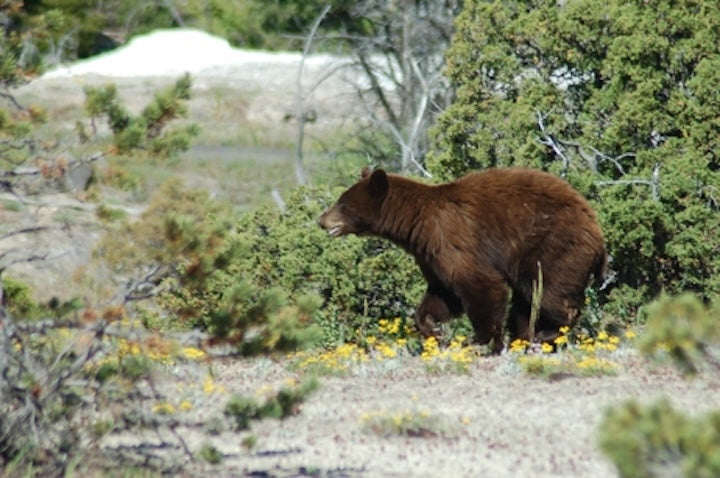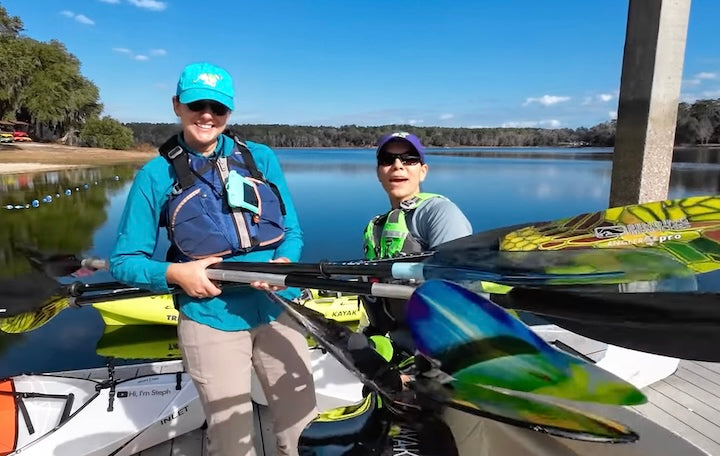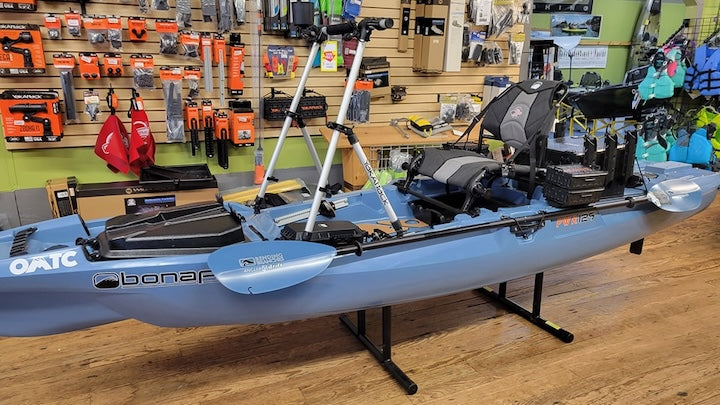What to Know about Kayak Camping

Kyle Hines at the bottom of Burgess Falls, one of his favorite kayak camping spots
Bending Branches Regional Ambassador, Kyle Hines, took up kayak camping in 2017 and found it’s something he loves to do.
We got him on the phone recently so we could pick his brain for suggestions and tips for others who want to get into this adventure sport, too:
How is kayak camping different from other types of camping?
One of the main ways kayak camping is different from other types of camping—especially RVing and car camping—is having to be very particular about how much you bring along. He says, “You have to really drop down the size of your gear. The best gear for kayak camping is the stuff made for backpacking.”
When he grew interested in using a kayak to get to out-of-the-way camping spots, he looked for a kayak that had interior storage, what we usually think of for multi-day touring. But what he found works best for him is a sit-on-top fishing kayak.

Kyle’s kayak ready for another camping trip
Kyle packs as much as he can into his 50-liter Kelty backpack, including most of his gear, his food and his clothes. The backpacker forums suggested a compacter trash bag, so that’s what he lines the inside with to keep everything dry. He puts his clothes into a 10-liter dry bag inside the pack, to be doubly sure they stay dry.
Kyle has become a big fan of sleeping in a hammock instead of a tent. He covers it with a hammock tarp, attaches the bug net around it and he’s good to go for the night. “Getting the tension right is the key to sleep comfortably,” he suggests. He likes the Geaux hammock with carabiner straps, Wise Owl Snug Net bug net and Field & Stream Whisper Lite sleeping bag.
So his biggest inspiration has been to adapt backpacking gear to kayak camping. it packs up tight, is light, easy to transport, unpack and move.

Kyle’s hammock set-up
What do new kayak campers need to know?
Kyle doesn’t recommend just heading out and buying a bunch of gear. Set your budget first and then focus on the necessities. Just the bare minimum: a hammock/tarp/bug net combo or tent, your sleeping bag, backpack, solo stove, water filter and food, maybe a smaller dry bag or two.
Go out and camp with that and then you can figure out where to improve, what else you’d like to have. He says, “You won’t know until all of what you need personally until you go out and try it on your own. Do some research. What can you store safely in a kayak? Will you hike, too?”
He also recommends: “Don’t go too big on the backpack as has to fit in your kayak.” His 50-liter Kelty is a great size for his needs. He straps it down tight on the back of his kayak next to his cooler.
Kyle also uses available storage in the kayak itself for smaller dry bags with other things he needs. So when you look for a kayak for camping, keep storage areas in mind. Weight capacity is also important. You’ll want your boat to be able to handle you as well as the weight of your gear easily.

An overview of the camping gear Kyle uses on his kayak trips
Freeze-dried or dehydrated food is lightest and packs smallest. You can either shop the backpacking brands (Kyle uses Mountain House) or make it yourself. Kyle brings his own water as well as a Sawyer Mini water filter. Depending on where you go, a high-quality water filter may be enough so you don’t have to pack water along.
Speaking of camp food, Kyle brings HotHands hand warmers along—they’re handy for keeping your cooked food warm in case you have to let it sit for some reason.
At first Kyle realized he overloaded himself and carried too much. While he wanted to prepare, he found it’s easy to over-prepare. He also is sure to keep his kayak deck uncluttered. Everything is contained in its place.
Along with that, he says, “Have a balanced kayak—not too much in the front or back. You want to be able to navigate the water well, especially in any rapids. Don’t let anything impede your paddle strokes.”
Cotton clothes while camping—especially around the water—is never a good idea. When cotton gets wet it stays wet for a long time. And if you happen to capsize, cotton clothes will weigh you down in the water. Instead opt for quick-dry clothing.
Watch the weather. Know the forecast, even upstream up to 200 miles away. Heavy rain up there can drastically affect river flow and even make it dangerous. Also, pay attention to the water line along the banks. You don’t want to put your hammock too close to the bank or have your kayaks floating downstream.
Know the route and let others know where you’ll be and when you expect to return, especially if you’re not sure you’ll have a cell signal. Kyle will sometimes even post his plans on his Facebook page just to be sure someone knows where he is in case he would end up in an emergency situation.
More gear items Kyle likes are…
Besides what we’ve already mentioned, Kyle also likes:
- Anker PowerCore battery pack. This can charge his phone up to five times while he’s on a multi-day trip.
- Wise Owl tarp, microfiber camp towels
- GSI Pinnacle soloist cook kit.
- Waterproof ultri-lite salt & pepper shaker
- MSR Pocket Rocket stove for cooking
Have a PFD (life jacket) that’s designed for kayakers and wear it when you’re on the water, always. Kyle likes Astral.

Can you spot the campers on this island in Lake Ouachita?
Kyle’s favorite kayak camping destinations
Kyle lives in Louisiana, but likes to do most of his kayak camping up in Arkansas and Tennessee. A few of his favorite kayak camping spots include:
- Lake Ouachita in west-central Arkansas. Arkansas’ largest lake is surrounded by almost 2 million acres of national forest. There are many islands on the lake with first-come, first-served campsites.
- Burgess Falls State Park in central Tennessee. Burgess Falls is the focal point of this state park, which is actually four waterfalls that cascade 250 feet down the Falling Water River.
What paddle questions can we help you with? Contact our friendly Customer Service team today: 715-755-3405 •
More for you...




